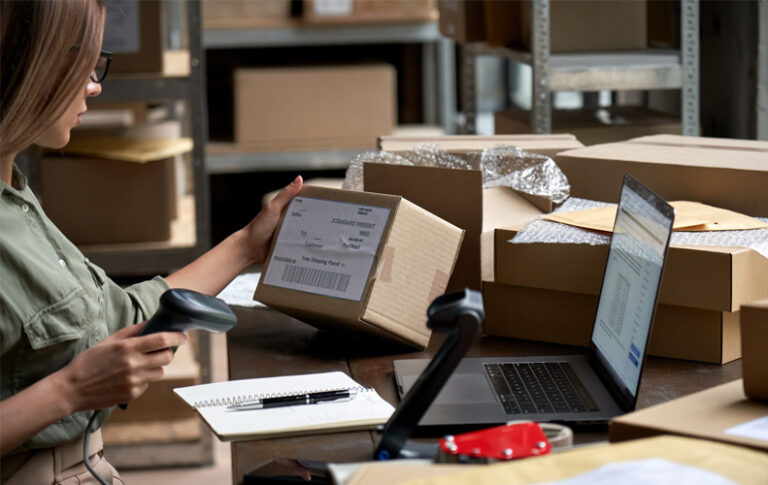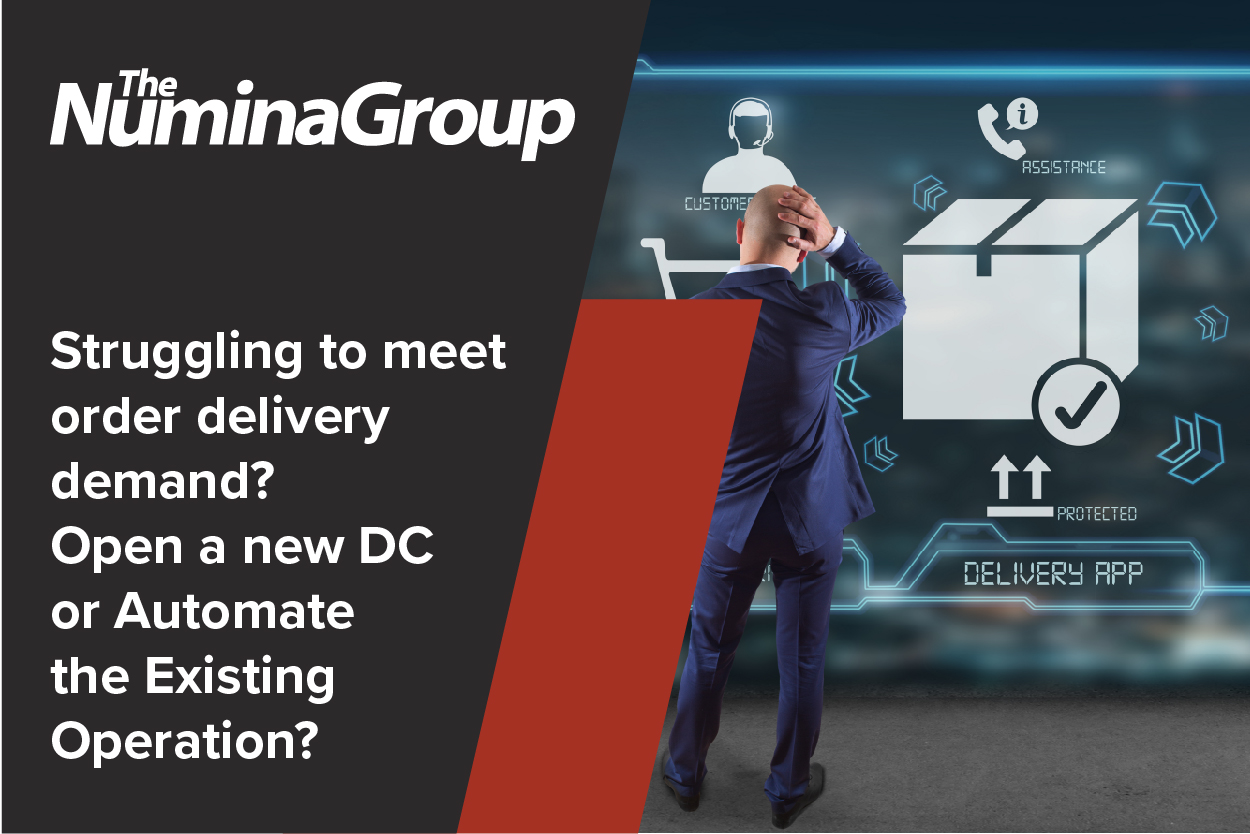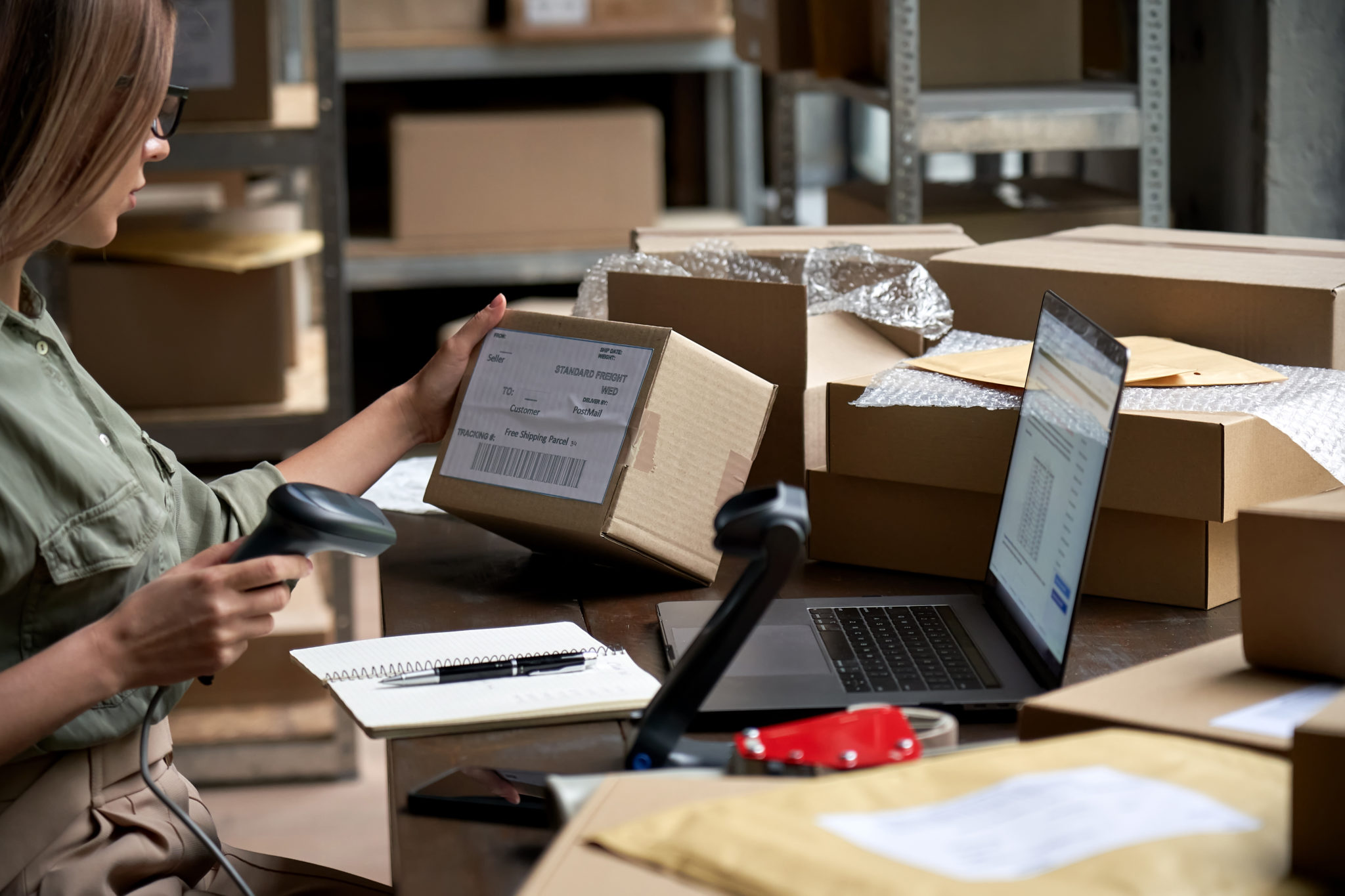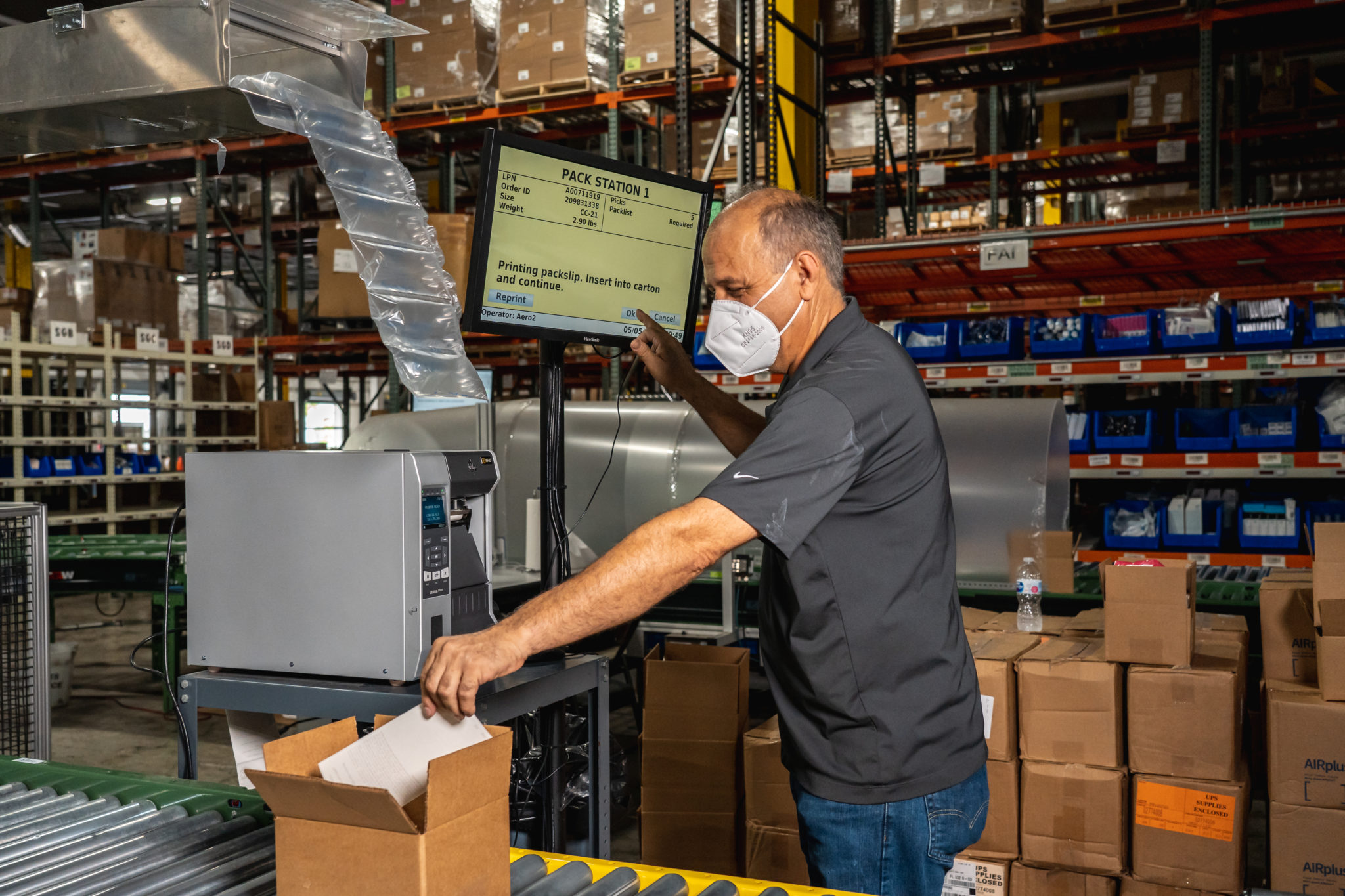
Recently, the Numina Group was engaged in a warehouse design engineering study for a growing e-commerce company. The client was struggling to meet their growing SKU volume and faster fulfillment requirements in a same day window to meet customers’ expectations.

During a project review meeting, the client asked our warehouse design team to consider whether opening a new, identical minimally automated warehouse operation in a more central location, in addition to the current West Coast operation, was a better investment than automating the current facility.
It’s a valid question. This decision to open an additional warehouse before optimizing the current DC operations has been popping up more and more. Many fulfillment operations consider this question due to the need for speed of delivery. Locating satellite distribution centers closer to their customers reduces shipping times and costs.
There are some general principles to be considered before making such a complex decision. Any business operating in today’s highly competitive e-commerce world, warehouse space must first be focused on efficiency and speed to gain an edge over their competition. Customer satisfaction is paramount, which means faster, and more accurate order fulfillment is essential in every operation.
Profitability per order is also essential, so getting more orders picked, packed, and shipped at a lower labor cost per operator is required in every distribution center. In short, fulfillment operations must get more orders out the door faster, at a lower cost.

Any business that is reliant on e-commerce or B2B order fulfillment can’t survive if it does not have higher productivity than its competitors.
As you review your fulfillment strategy, keep the following tips in mind:
Finally, the answer to our client’s question, “what would I do if I owned the business?” Numina Group approaches every job with this thought in mind. We are an independent systems integrator, which allows us to evaluate which warehouse automation is the best choice for the application requirements and business goals of each customer’s business needs.
Blog: The Crucial Role of a Systems Integrator in Warehouse Automation
Our projects are guided by a key principle – to Define, Design, and Implement a solution consisting of the right process improvements and warehouse automation technologies we would buy if we were the principles in the business!”
It is the foundation of how we operate – being transparent and independent by choosing the best suited material handling equipment vendor for the customer’s requirements and designing the solution so clients receive positive cash flow in the first operating year from their warehouse automation investment.
Past warehouse picking automation project KPIs are from 160 to 350+ lines/operator hour picking rates based on voice picking with manual batch push carts, pick to light, or goods-to-person (G2P) technologies.
For this customer, it was determined a G2P system best suited the customer’s need for storing and picking the top 55,000 to 60,000 SKUs. It provided for dense product storage and 300+ lines/ hour operator pick rate, a 250% performance improvement compared to the current RF terminal-based picking used at the DC.
Coupling the G2P solution with an automated pack and ship conveyor system that incorporated in-line pack, void-fill taping and an automated manifesting and print and apply label applicator would reduce 50% of the manual packing, manifesting and labeling labor to more than double hourly order shipment throughput.
For this specific customer, we knew within 30 days into the warehouse design study there was a lot of opportunity to improve current operations by removing manual decision making and reducing manual touches in the pack and ship operation.
Picking, packing, and shipping process improvements combined with the right blend of automation are proven to drive a compelling ROI when purchasing or leasing an automation solution.
The customer’s investment in warehouse automation for their current DC was projected at a payback of 30 months based on labor savings only. When accounting for the additional tangible benefits the warehouse automation provided, such as 25% more warehouse storage space, increased throughput, higher accuracy, lower parcel freight costs, i.e. more orders going out the door faster, at a lower cost, the ROI can be as fast as 22-24 months.

While every warehouse environment is different, it was clear for this client would benefit more by first automating their current DC. Engaging in an effective warehouse automation design process before investing in a new satellite warehouse allowed them to make an educated determination of the best investment to achieve their business goals.
Finally, warehouse investments must be focused on reducing labor costs, lowering shipping costs and increasing daily throughput, the benefit of warehouse automation pays for itself by generating enough monthly operating savings and customer service improvements, so the investment in automation is basically free!
Blog: Order Picking Automation Options to Resolve Warehouse Labor Challenges
That’s why the material handling and logistics industry is so interested in the use of autonomous mobile robots (AMRs). The labor shortage and the rising costs associated with hiring and retaining warehouse workers are making AMRs a more attractive solution for many distribution and fulfillment centers.
Numina Group designs automated warehouse systems that scale to your business requirements. RDS™ WES-WCS warehouse execution software solutions integrate goods-to-people automation, and AMRs or AGVs based on your business needs.
Our order fulfillment automation solutions can start with pick-by-voice and batch order push carts, pick-by-light, and pick-to-conveyor and add AMR tuggers or G2P picking systems to streamline the order picking processes as your business grows.
Our RDS voice-directed picking, when combined with AMR Batchbot Carts to automate order movement in a zone based picking system achieves pick rates of 250+ lines per operator, double the typical performance of manual batch order push carts.
As a warehouse automation company with more than 35 years of experience, Numina offers the in-depth application know-how and software expertise necessary to ensure that your automation investment is successful.
We collaborate with clients to define and develop order fulfillment process improvements. As an independent system integrator, we help you evaluate, select, and implement the optimum blend of automation technologies for your operation.
With this approach, we’ve helped numerous companies reduce their dependency on an unpredictable labor market, quickly adapt or scale to meet changes in demand, and increase throughput and profitability across their entire distribution operation.
The Numina Group is here to help. Call (630) 343-2600 or fill out a contact form to arrange a complimentary site consultation.

The Numina Group
10331 Werch Drive
Woodridge, IL 60517
630-343-2600
How the Right Warehouse Automation Decisions Can Solve Your Labor Woes As the economy roars